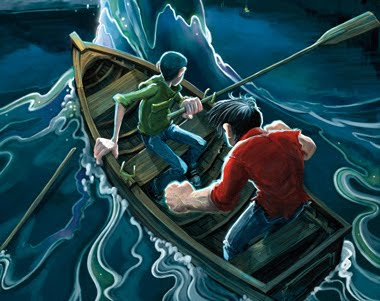Newfoundland is in North-East Canada. I have a friend from there and he recently sent me a copy of this poster. It could be found pinned up in Newfoundland towns in the 1980s.
 Wanted! Big squid.
Wanted! Big squid. It was a serious attempt by a biologist called Frederick Aldrich to gather samples of the giant squid,
Architeuthis dux. The chances of a live squid trashing around a coastline like in this picture are pretty slim, although it does make for an exciting poster. It was more likely that Newfoundlanders would find giant squid corpses or parts of corpses washed up on shore. A while ago on this blog I wrote about a different kind of big squid, the colossal squid,
Mesonychoteuthis Hamiltoni. We knew about that creature for decades before one was seen alive or even in one piece. That was because parts of its distinctive tentacles were occasionally washed up on beaches, biologists looked at them and knew that there had to be an undiscovered species out there.
Newfoundland has a long history with the giant squid. In 1873 the first complete specimen of a giant squid ever seen came ashore there and was photographed in the bathtub of the local reverend.
 Giant squid found in Newfoundland in 1873, hung above the bathtub.
Giant squid found in Newfoundland in 1873, hung above the bathtub.In the 1870’s many giant squid washed up on the shores of Newfoundland. No one knows why those years were a particularly busy time for strandings but many scientists believe that they happen in regular cycles and are therefore predictable. The length of time between mass strandings is not known, but Frederick Aldrich suggested it might be 90 years. Aldrich correctly predicted another group of strandings that occurred in the 1960s.
In both the 1870s and the 1960s most of the beached squid were dead by the time they were discovered. There was one massive exception. One giant squid was struggling in the shallows when fishermen came across it in 1878. I assume this discovery is the scene illustrated in the poster. They managed to hook the dying beast with a grapnel and stopped it from washing back out to sea. They measured it at seven metres or about twenty feet long. It might have been the biggest giant squid ever captured. We don’t know for sure because then, unfortunately, the fishermen chopped the creature up. They used it for dog food. Frederick Aldrich may have been worrying about this possibility when he offered a reward.








































